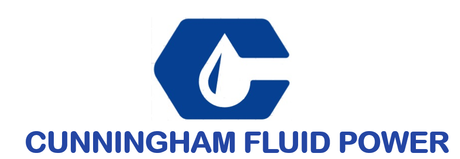Unlocking the Future of Manufacturing: Innovations in Stamping Sheet Metal Techniques
The future of manufacturing is being dramatically reshaped by innovations in various techniques, one of the most essential being stamping sheet metal. This process, which involves pressing metal sheets into desired shapes, is at the forefront of modern engineering and production methods. As industries strive for efficiency and precision, the evolution of stamping sheet metal techniques is unlocking new possibilities for manufacturers. Advancements in technology, such as automation and computer-aided design, have revolutionized how stamped components are produced, leading to enhanced accuracy, reduced waste, and lower costs. In this exploration of stamping sheet metal innovations, we delve into the mechanical and technological breakthroughs that are setting the stage for the next generation of manufacturing, ultimately highlighting its significance in diverse applications ranging from automotive to aerospace.
Emerging Technologies in Sheet Metal Stamping Processes
The landscape of manufacturing is on the brink of radical transformation, particularly in the field of sheet metal stamping. Recent industry reports indicate that the global sheet metal market is expected to reach $260 billion by 2025, driven by advancements in automation and smart technology. Emerging technologies such as computer numerical control (CNC) machining, laser cutting, and precision stamping are redefining traditional stamping processes, enhancing accuracy, and reducing waste. For instance, studies show that automation can increase efficiency by up to 30%, allowing manufacturers to meet rising demand with greater flexibility.
Tips: When considering upgrades to stamping techniques, it’s essential to evaluate your specific production needs. Investing in integrated software solutions can streamline operations and reduce downtime. Additionally, training your workforce on new technologies is crucial to fully leverage these innovations.
Moreover, adoption of Industry 4.0 principles in sheet metal stamping not only fosters real-time data tracking but also enhances maintenance protocols. This predictive maintenance can minimize unexpected equipment failures, which studies suggest can save manufacturers up to 20% in maintenance costs annually. Embracing these emerging technologies not only optimizes production processes but also positions manufacturers to thrive in a competitive market landscape.
Tips: Explore partnerships with technology providers to stay ahead of the curve. Engaging with innovative startups can introduce fresh solutions and insights into your manufacturing processes.
Key Innovations Driving Efficiency and Precision in Manufacturing
Recent advancements in stamping sheet metal techniques are reshaping the manufacturing landscape, particularly through innovations that drive efficiency and precision. According to the "Global Sheet Metal Fabrication Market Report" released by Grand View Research, the sheet metal fabrication industry is expected to reach $272 billion by 2025, growing at a compound annual growth rate (CAGR) of 5.1%. This growth is largely attributed to the incorporation of smart technology and automation in stamping processes, allowing manufacturers to reduce operational costs while maintaining high precision.
One key innovation is the implementation of servo-electric press technology, which optimizes the stamping process by providing precise control over speed and force. Studies have shown that this technology can increase production rates by up to 50% while simultaneously reducing energy consumption by 20-30% compared to traditional hydraulic presses. Additionally, the adoption of real-time monitoring systems enables manufacturers to identify defects instantly, ensuring higher quality assurance and reducing waste, which is projected to save up to $60 million for large-scale manufacturers annually, according to data from the Manufacturing Institute. These advancements not only enhance productivity but also allow for greater design flexibility, meeting the demands of increasingly complex component geometries in various industries.
Unlocking the Future of Manufacturing: Innovations in Stamping Sheet Metal Techniques
| Innovation Technique | Description | Efficiency Improvement (%) | Precision Improvement (microns) | Material Compatibility |
|---|---|---|---|---|
| Laser Cutting | Uses high-powered lasers to cut intricate shapes. | 30% | 10 microns | Steel, Aluminum, Copper |
| Hydraulic Press | Utilizes hydraulic cylinders to shape metal. | 25% | 15 microns | Steel, Alloy |
| Punching | Creates holes and shapes through mechanical action. | 15% | 20 microns | Aluminum, Steel |
| Stamping | Forming processes with presses to create shapes from sheets. | 20% | 25 microns | Steel, Copper |
| 3D Printing | Additive manufacturing techniques for metal parts. | 40% | 5 microns | Titanium, Stainless Steel |
The Role of Automation in Modern Sheet Metal Stamping Techniques
Automation has profoundly transformed the landscape of sheet metal stamping, significantly enhancing efficiency and precision in manufacturing processes. By integrating advanced technologies such as robotics and computer-controlled systems, manufacturers can achieve quicker turnaround times while maintaining high-quality standards. Automated stamping lines minimize human error and fatigue, making it possible to execute complex designs with high repeatability. This technological shift not only reduces production costs but also allows for greater flexibility in responding to market demands.
In addition to speed and accuracy, the role of automation in modern stamping techniques includes the ability to gather data in real time. Smart machines equipped with sensors can monitor the stamping process, providing valuable insights that help in predictive maintenance and quality control. This capability leads to improved product consistency and reduced waste, which are vital in today's competitive market. As the industry continues to embrace these innovations, the combination of automation with sheet metal stamping positions manufacturers to meet the challenges of the future while staying ahead of the curve.
Sustainability Practices in Sheet Metal Stamping Innovations
The evolution of sheet metal stamping techniques has ushered in a new era of sustainability in manufacturing. As industries face increasing pressure to reduce their environmental footprint, innovative practices in this field are making a significant impact. Advanced technologies, such as laser cutting and precision bending, not only enhance efficiency but also minimize waste. By optimizing materials and energy use, manufacturers are able to produce high-quality components while adhering to stricter sustainability regulations.
Moreover, adopting eco-friendly materials in the stamping process fosters a circular economy. Recycled metals and sustainable coatings are becoming more prevalent, reducing reliance on virgin resources. Additionally, manufacturers are implementing closed-loop systems where off-cuts and scraps are reused or transformed into energy, effectively lowering landfill contributions. These practices not only demonstrate a commitment to environmental stewardship but also present economic advantages by reducing costs associated with raw material procurement and waste management. Through these innovations, the future of manufacturing in sheet metal stamping looks bright and sustainable.
Innovations in Stamping Sheet Metal Techniques
This chart illustrates the percentage of manufacturers adopting sustainable practices in sheet metal stamping innovations over the last five years.
Future Trends Transforming the Sheet Metal Manufacturing Landscape
The landscape of sheet metal manufacturing is poised for transformation, driven by innovative stamping techniques that are reshaping the industry. As we look toward 2025 and beyond, advancements in technology such as automation and precision stamping are becoming crucial in creating more efficient production lines. These innovations not only enhance the speed of manufacturing processes but also significantly improve the accuracy and quality of the final products.
Tips: To stay ahead in this evolving market, manufacturers should consider investing in smart machinery that utilizes AI and machine learning for better output predictability. Moreover, adopting flexible manufacturing systems can allow for quick adjustments in production, meeting varying customer demands without compromising on quality.
Future trends also indicate a growing emphasis on sustainability within sheet metal manufacturing. Techniques that reduce waste and utilize recyclable materials are expected to become standard practice. Engaging in green manufacturing not only helps in compliance with environmental regulations but also attracts a consumer base that prioritizes sustainability in their purchasing decisions.
Tips: Companies should regularly evaluate their production practices to identify areas for sustainability improvements, as these measures can lead to significant operational cost savings. Collaborating with suppliers who share a commitment to sustainable practices can also enhance the overall environmental performance of the industry.

We have over 30 years of experience in designing complete hydraulic systems, repairs and distribution of fluid power equipment and parts.
FOLLOW US ON :
Contact Details
Address:
4020 SE 45th CT.
Ocala, FL 34480
Phone No:
Email:
sales@cunninghamfluidpower.com

